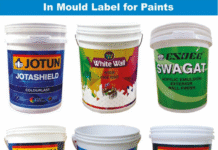Wifag Polytype is a worldwide leader in the manufacturing of machine systems for the decoration and printing of plastic cups, lids, tubes and sleeves as well as tube finishing and thermoforming. At the PLASTINDIA 2018 exhibition, the company will showcase its latest advances in tube and cup decoration as well as the current packaging trends.
Wifag Polytype is known for selling machines for manufacturing containers and tube packaging for the cosmetics, pharmaceutical, food and beverages market. With its Indian (and South Asia) office located in Noida, Wifag plans to show the new Kombis FT 1500 at the Gandhinagar event. Wifag Polytype owns 49% of Mechatronica, which manufactures the Kombis tube making machines.
Kombis FT 1500 is an automatic machine for manufacturing aluminium barrier laminate (ABL) or plastic barrier laminate (PBL) tubes for the pharmaceutical or cosmetics industry. The main advantage of the machine is its computerized automation in alignment with Industry 4.0. The machine can be connected to the internet for diagnostics, reading data of machine performance and for adjustments from any location.
The FT 1500 can produce 150 tubes a minute with innovative enhancements for quicker change of tooling, higher reliability and machine safety. “The biggest advantage with our machine is that it is Unilever approved and that carries a lot of weight in the market. It saves us a lot of time usually taken to prove our machine’s potential to big multinationals. There are about 60 plus machines coming for Unilever in India and around 80 machines to the entire South Asian region,” says Arvind Narang, chief executive officer of Wifag Polytype Marketing. Another aspect of tube making industry which propels its growth in South Asia is the standardized or fixed diameter of tubes and thus the compatibility with innovative caps and closures that are easily available.
saves us a lot of time usually taken to prove our machine’s potential to big multinationals. There are about 60 plus machines coming for Unilever in India and around 80 machines to the entire South Asian region,” says Arvind Narang, chief executive officer of Wifag Polytype Marketing. Another aspect of tube making industry which propels its growth in South Asia is the standardized or fixed diameter of tubes and thus the compatibility with innovative caps and closures that are easily available.
“The market for aluminium barrier laminate (ABL) tubes is just as good as stagnant, the reason being that the cost involved in manufacturing the metal tubes is going up because of the increasing cost of aluminium. There is hardly any demand left, whereas the plastic laminated tube market is soaring with demand,” Narang adds. “The growth till around four

machines provided by Wifag Polytype.
Photo PSA
months ago was more concentrated towards lamitubes. I reckon that a similar situation will prevail for at least another year down the line. However, many experts observe growth in the demand for plastic tubes also, which came into the limelight when Himalaya began using them extensively.” Narang is extremely optimistic about the PLASTINDIA event where he is confident of finalizing the sale of several tube-making lines and those too with higher speeds than those already in the market.











